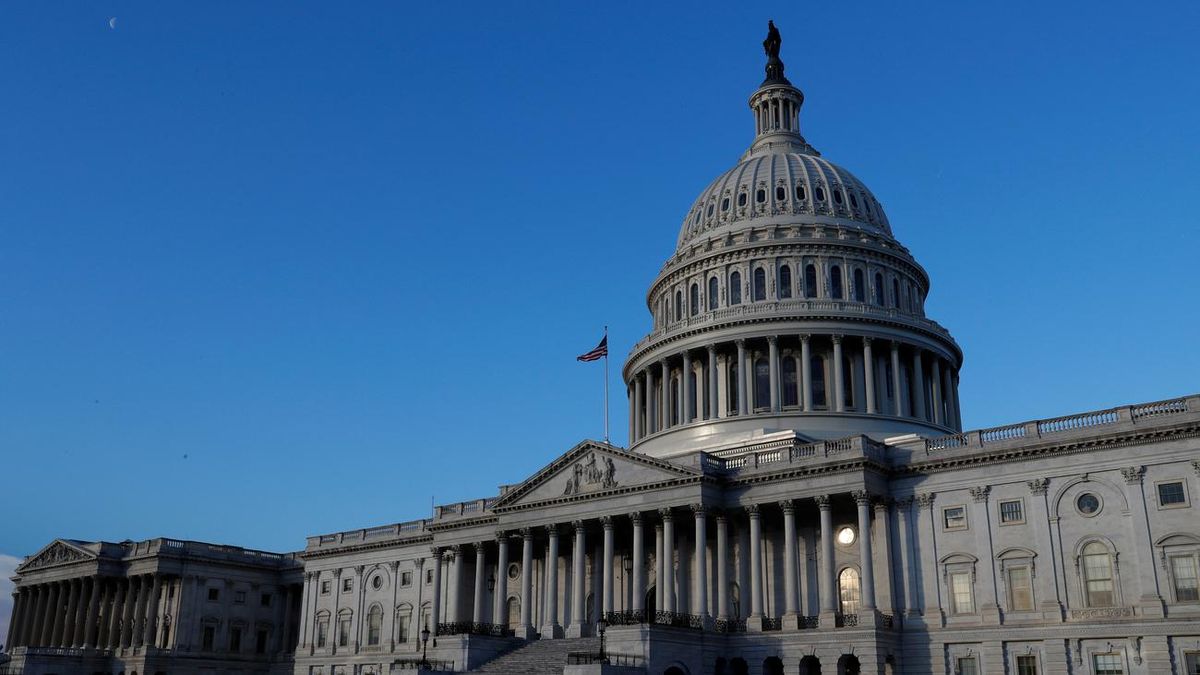What we already know about the 2022 midterm elections

A few minutes every morning is all you need.
Stay up to date on the world's Headlines and Human Stories. It's fun, it's factual, it's fluff-free.
In recent history, midterm elections have weakened the party of the president. If this political trend holds in 2022, Democrats could lose control of either the House or the Senate, or both.
Though November 8, 2022 is still a year and a half away, attention in the United States has already turned to the 2022 midterm elections and how they will affect the balance of power in Washington, DC.
Some politicians have preemptively announced they will not be running in 2022, while outside hopefuls are looking to gain name recognition as they prepare to take on the difficult task of unseating an incumbent.
In recent history, midterm elections have weakened the party of the president. In both 2010 and 2014, with Democratic President Barack Obama in office, Republicans made significant gains in Congress, giving them the power to act as a check on the president’s agenda.
Likewise, in 2018, during President Donald Trump’s tenure, Republicans lost control of the House of Representatives for the first time since 2011.
If this political trend holds in 2022, Democrats could lose control of either the House or the Senate, or both. The party’s control of Congress is already fragile, with a 50/50 split in the Senate and a lead of less than 10 representatives in the House (even after all vacancies are filled).
All 435 House seats will be up for election in 2022, as will 34 Senate seats. There will also be significant state elections that could help shape the national political landscape. While much can change between now and the 2022 midterm elections, some details are already coming into focus.
Looking toward the 2022 midterm elections
In certain spheres, the results of the 2020 election are still being litigated. Faith in election security is especially low among Republican voters, the majority of whom are reported to believe claims by former President Trump that rampant fraud changed the ultimate result.
At the moment, the Democrats control the presidency, the Senate and the House, a coalition of power known as the “trifecta” in political parlance. Theoretically, this means the party should have the freedom to pursue their agenda. In practice, though, Democrats are split between their centrist and progressive wings, hampering their ability to follow through on Biden’s campaign promises.
Even if the party were more united, the Senate would likely have to bypass the filibuster in order to pass legislation, a move that is controversial among centrist Democrats and Republicans. On the other hand, if Democrats fail to make progress on their agenda, it will create difficult messaging for their members in the 2022 election cycle.
For Democrats, who can’t afford to lose even one seat in the Senate, the next year and a half is fraught with political risks and land mines. Biden campaigned on one of the most progressive agendas in modern US history, but many Democratic members of Congress who hail from more conservative districts will need to argue that the party hasn’t swung too far left if they wish to stay in power.
For Republicans, the biggest question is whether Trump’s rhetoric about election fraud will depress voter turnout, especially since midterms traditionally have relatively low turnout already. Some believe the former president’s claims that the 2020 election was stolen ended up hurting Republicans in the January Georgia Senate runoff elections that gave Democrats their narrow lead.
Who’s up for reelection in the Senate in 2022?
US senators are elected to six-year terms, which means roughly a third of the Senate is up for reelection every two years. In 2022, 34 Senate seats will be open. Of those, 14 are currently held by Democrats and 20 are held by Republicans.
For the Democrats, the most vulnerable seat is likely that of Senator Raphael Warnock, who, along with Senator Jon Ossoff, won his seat in the January runoff election in Georgia. Warnock will have to immediately turn around and defend his seat less than two years after winning it. Prior to his victory, a Democrat hadn’t held the seat since 2005.
The biggest concern for Republicans in the 2022 Senate midterm elections is the number of sitting senators who have opted not to run again. In the first week of March, Senator Roy Blunt of Missouri became the fifth member of his party to announce he would not be running in 2022. He follows Senators Richard Burr (North Carolina), Rob Portman (Ohio), Richard Shelby (Alabama) and Pat Toomey (Pennsylvania).
Open seats tend to be the easiest to flip, so Democrats will likely put much of their resources toward supporting candidates in those five districts. Democrats, though, have no room for error on their own side and will have to be careful to protect any at-risk incumbents.
Who’s up for reelection in the House in 2022?
All US Representatives are up for reelection every two years, which means there will be 435 House elections in 2022. Historically, incumbents have had an advantage in Congressional elections. For instance, in 2020, a higher than usual number of incumbents lost their reelection bids, yet it was still only 9%: 34 out of 378 total incumbents.
Both parties will be keenly focused on seats without incumbents. Already, four members of the House, two from each party, have announced they will not be running for reelection in 2022. For the Republicans, they will be losing Reps. Jody Hice (Georgia) and Tom Reed (New York). The Democrats will lose Reps. Ann Kirkpatrick (Arizona) and Filemon Vela (Texas).
If any incumbents in the House are vulnerable in 2022, it’s the freshmen members who were only just elected in 2020. These are the candidates who haven’t had the time to build up a substantial cash advantage over their competitors or establish a strong legislative resume. There are a total of 60 freshmen Representatives, 15 of whom are Democrats and 45 of whom are Republicans.
State elections in 2022
Beyond Washington, perhaps the most consequential elections in 2022 will be the many gubernatorial elections. In 2022, 36 state governorships will be on the line. Of them, 20 are currently held by Republicans and 16 are held by Democrats.
Eight of those governors (four from each party) are term limited, which means they can’t run for reelection. The Republicans are Doug Ducey (Arizona), Larry Hogan (Maryland), Asa Hutchinson (Arkansas) and Pete Ricketts (Nebraska). The Democrats whose terms are up are Kate Brown (Oregon), David Ige (Hawaii), Gina Raimondo (Rhode Island) and Tom Wolf (Pennsylvania).
One gubernatorial race getting early attention is Texas. That is because Oscar-winning actor Matthew McConaughey has suggested he is considering running for governor in 2022, though for which party is unknown. The state’s current governor, Greg Abbott, a Republican, recently faced heavy criticism for his response to the winter storm that left much of his state without power.
There are no term limits for the Texas governorship and, as of now, Abbott has given no indication that he plans to step down in 2022.
Have a tip or story? Get in touch with our reporters at tips@themilsource.com




Comments ()